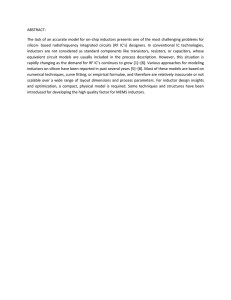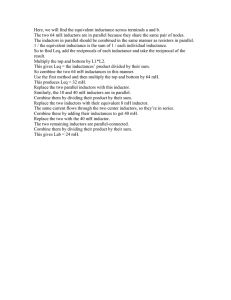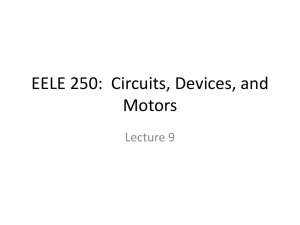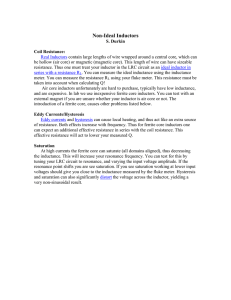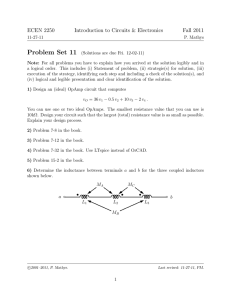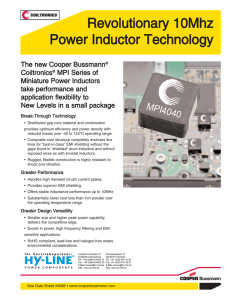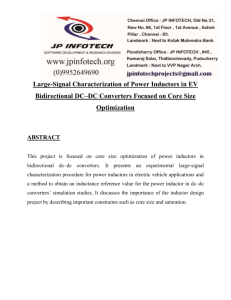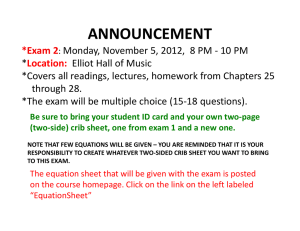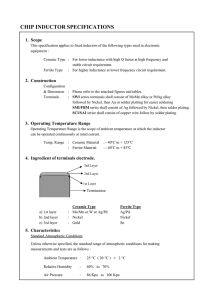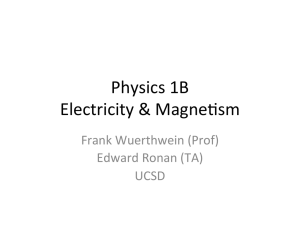Inductors Inductors
advertisement
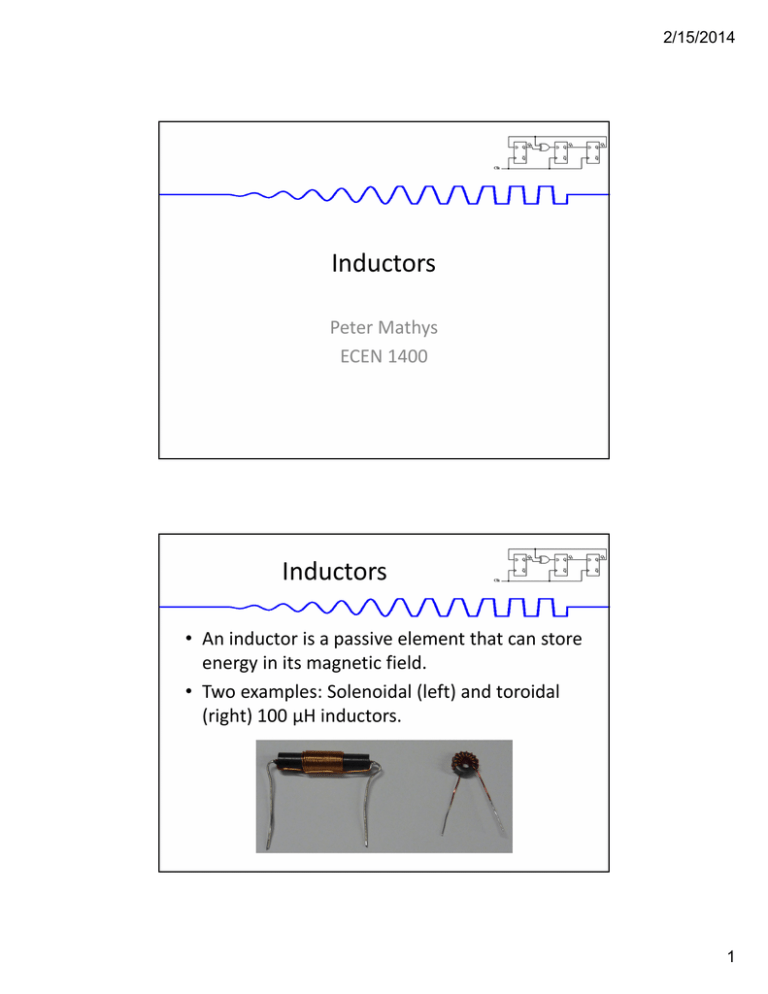
2/15/2014 Inductors Peter Mathys ECEN 1400 Inductors • An inductor is a passive element that can store energy in its magnetic field. • Two examples: Solenoidal (left) and toroidal (right) 100 μH inductors. 1 2/15/2014 i-v Relationship for L • Inductance L is measured in henry (H). Typical values range from μH (10-6 H) to about 1 H. Inductance of Solenoid L • Single layer of N turns of wire on core material with permeability μ. Length l (ell) and crosssection A. 2 2/15/2014 Power and Energy • Inductor does not dissipate power. • Inductor can store energy => has memory. Inductors in Series 3 2/15/2014 Inductors in Parallel L and Sinusoidal Signals • Since vL(t) = L·diL(t)/dt, inductors are short circuits for dc => Cannot measure i-v characteristic using dc signals. • Try setting iL(t) = IA·cos(ωt) where IA is the amplitude of iL(t) and ω=2πf is the frequency in radians/sec (f is frequency in Hz or sec-1). • Then observe vL(t) for different values of IA and ω (or f). 4 2/15/2014 Inductors and Sinusoids Graphically 5 2/15/2014 Compare to Capacitor Using Complex Numbers 6 2/15/2014 Impedance of L Series R,L,C Circuit 7 2/15/2014 Parallel R,L,C Circuit 8
